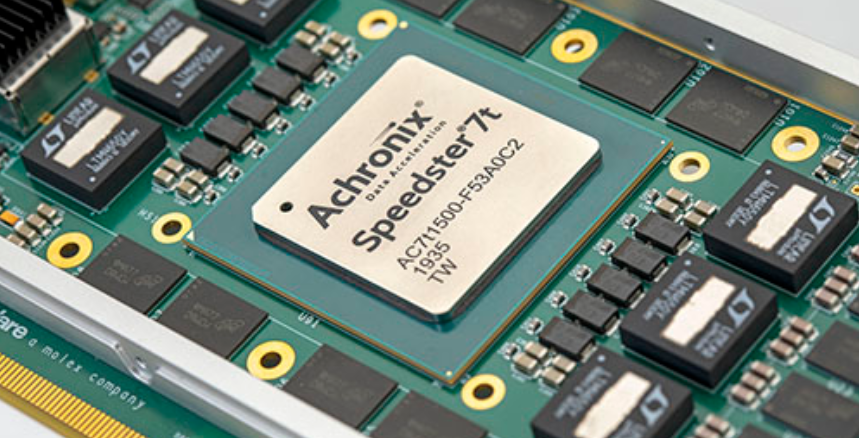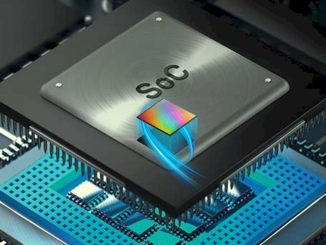
The stars are aligning for FPGA maker Achronix with the emergence of PCIe 5.0 and a growing set of potential customers who want to build accelerator cards with their technology on the networking roadmap. Further, the SPAC deal is close to completing, likely around May, which could allow Achronix to raise further capital, as much as $330 million, according to CEO Robert Blake, who spoke with us this week.
With the Speedster7t product finally shipping to its first two customers, Blake says they are satisfied with the silicon coming back, which is testing well. Their first customer, Bittware, is also a partner set to make acceleration cards with Achronix FPGA technology and the second is an unnamed player in the compute space building PCIe 5.0 products. Two customers isn’t enough to make a profound business but Blake says this Speedster7t is still in its early days. With PCIe 5.0 and an increasing focus on workload-specific and general acceleration across the market, the list will keep growing.
Achronix is focusing on the evolution of the Speedster family, looking ahead at broadening the device types, including working with TSMC for future 5nm capabilities—something Blake says they’ve been exploring for over a year, with an eye on 3nm. He adds that they will also continue to emphasize memory in future designs. Recall that the Speedster devices are the only FPGAs with high-performance GDDR6 memory. “We have always felt that was an important piece; if you’re going to build any networking and acceleration product, that’s the foundation you need—not just smart compute functions, but backing those up with memory and data transport.”
As those next generations emerge, Blake says they are focusing on a few key areas in R&D. One of those is keeping pace with networking speeds, including the ability to do high performance computing at line rate speeds all the way up to 400Gb/s, which Speedster7t can already do. He also says the memory infrastructure and a high-speed 2GHz network on chip as the data transport layer as already exists on Speedster7t will continue to be a critical piece of what they develop going forward—it will all just be done on 5nm and 3nm, absolutely with increasing complexity.
“The development groups are looking at follow-on capabilities of the Speedster7t architectures, what we might do from a networking, compute and line-rate packet processing space, and what new memory architectures we might evaluate. There are two candidates there, continuing in the theme now with variants with DDR, GDDR memories and also HBM—we’re pursuing both for products in the next generation,” Blake adds.
There is no doubt that 2021 is a tough time to compete for acceleration dominance, especially with Nvidia stronger than ever (and now with its own CPU architecture) and custom ASICs carving out small slices for datacenter workloads like AI/ML/. Blake’s view is balanced: “Look,” he says. “We didn’t expect that FPGA technology would replace all of that but we do believe there will be big growth in this space that will only go up. Datasets are growing, algorithms are changing, networking capabilities and requirements are increasing and we give the ability to adapt to all those changes. So I’m very bullish on the outlook for FPGAs. We’ll keep innovating on compute and networking at line rate, memory bandwidth increases and data transport. These are the fundamentals but the key is the ability to be flexible and change as requirements do.”
From a business standpoint, Blake says it’s all about how fast they can roll out new products. “There’s a tremendous amount of demand and some new opportunity with the acquisitions [Intel/Altera, AMD/Xilinx] and there is space for us to fill in terms of being a major supplier in this space, and the IPO and additional capital will allow us to do that.”
As Speedster7t ships, Achronix hopes that via their manufacturing partners like Bittware, they can carve out share in areas including 5G infrastructure, computational storage, AI/ML, networking, and general compute acceleration in enterprise.
While most chipmakers at the higher end of process technology aren’t experiencing hiccups on the chip manufacturing side, Blake says they’re good during the qualification phase now but there is some uncertainty all device makers face going forward. “We weren’t expecting to ship tons, still going through qualifications. We do see shortages of wafers and packaging, for our business we’re in good shape. We were able to secure the requirements both silicon wafers and packaging but I don’t know what 2022 will bring and whether things will catch up and whether there’s double ordering but we’re in great shape for 2021.”






It’s great to have speed increases but sonethhing that is really holding back fpgas right now is latency. It’s hard to get it low enough for modern projects